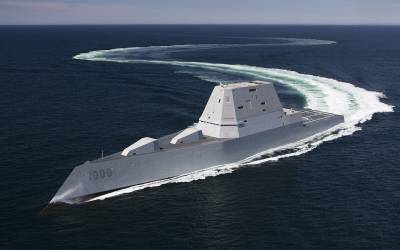67% of the fleet (click to view full) DID's FOCUS Article for the DDG-1000 Zumwalt Class "destroyer" program covers the new ships' capabilities and technologies, key controversies, associated contracts and costs, and related background resources. The ship's prime...
Signals Intercept, Cryptography, etc. Articles
Flexible G/ATORs: The USMC’s Multi-Mission AESA Ground Radars
G/ATOR diorama (click to view full) The US military's long run of unquestioned air superiority has led to shortcuts in mobile land-based air defenses, and the US Marines are no exception. A December 2005 release from Sen. Schumer's office [D-NY] said that: "Current...
DoS Approved BT-67 FMS To Argentina | Lithuania To Spend $16M For Ukraine Rehabilitation | Japan Orders THeMIS
Americas Lockheed Martin won an $88.3 million Captains of Industry contract for the overhaul of B-2 digital receiver and legacy defense message system. This contract provides for overhaul, management, and material lay-in. Work will be performed at Owego, New York, and...
USA’s B-2 Bombers Leading the Way in Contracting for Availability
All together now... (click to view full) Britain's practice of "contracting for availability" for key equipment, rather than paying for spare parts and maintenance hours, may be its most significant defense procurement reform. In a world where older air, sea, and...
USN Gets First Two T-54As | Russia Received New Su-35s | Ghost Sharks Revealed By Anduril
Americas The US Navy marks a new chapter in multi-engine pilot training with the arrival of its first two T-54A trainer aircraft at Naval Air Station (NAS) Corpus Christi on Apr. 18th. The T-54A, a modified Beechcraft King Air 260 designated for the Navy, replaces the...
V-22 Osprey: The Multi-Year Buys, 2008-2021
(click to view full) In March 2008, the Bell Boeing Joint Project Office in Amarillo, TX received a $10.4 billion modification that converted the previous N00019-07-C-0001 advance acquisition contract to a fixed-price-incentive-fee, multi-year contract. The new...
X-62 VISTA Flew 1st AI Dogfight Against Manned F-16s | CyberTech Conference Took Place In Israel | China Bolsters Space Capabilities
Americas D-J Engineering Inc. won a $30 million deal for machine shop requirements for supplies related to EA-18G and P-8A aircraft components and related platforms/requirements for Naval Surface Warfare Center Crane. Each awardee will be awarded $10,000 obligated at...
P-8 Poseidon MMA: Long-Range Maritime Patrol, and More
P-8A Poseidon (click to view full) Maritime surveillance and patrol is becoming more and more important, but the USA's P-3 Orion turboprop fleet is falling apart. The P-7 Long Range Air ASW (Anti-Submarine Warfare) Capable Aircraft program to create an improved P-3...
Denmark Sells F-16s To Argentina | Finnish Air Force To Conduct AAR With MMU | Mid-Range Capability Missile Landed In The Philippines
Americas Thales Defense & Security Inc. won a $16 million deal for the repair of three items that are part of the H-1 Optimized Top Owl system. All work will be performed in Valbonne, France, and work is expected to be completed by October 2024. Annual working...





